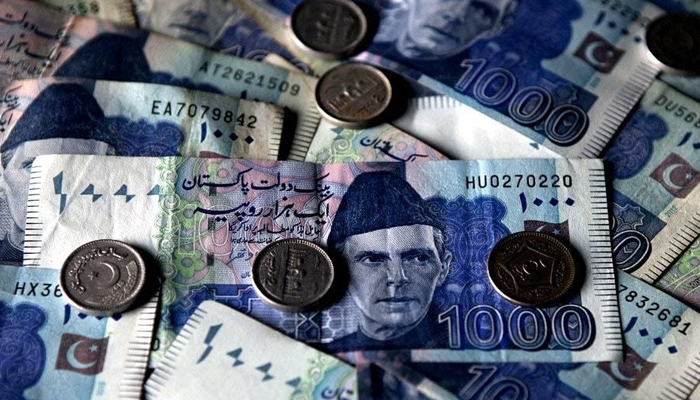Rupee appreciates slightly against the US dollar
Pakistani currency strengthens 0.04% against the greenback to close at Rs166.91 in the inter-bank market
September 03, 2021

KARACHI: The rupee appreciated 0.04% against the US dollar in the inter-bank market on Friday, closing the week at Rs166.91.
The local currency closed at a 13-month low of Rs166.98 on Thursday on the back of a surge in demand for the greenback to pay for imports.
The rupee has depreciated around 10% since May, becoming the worst performer in Asia, according to a basket of 13 currencies compiled by Bloomberg.
The Pakistani currency last touched a 22-month high of Rs152.27 four months ago in May 2021, however, since then the rupee has been losing ground against the US currency.
During the week, uncertainty in Afghanistan and the widening trade deficit — which surged 133% to $4.05 billion in August — took a toll on the currency market.
A significant trade deficit suggests that the demand for foreign currency has remained high due to soaring import payments compared to minimal export revenue.
Earlier, Arif Habib Limited Head of Research Tahir Abbas had told Geo.tv that the real effective exchange rate (REER) – the country’s cost of external trade – is currently around 99 points on the index, which means import and export pricing with our trade partners is better and the situation is not as tense. Therefore, he had predicted that the rupee will consolidate soon.
However, the outlook for Pakistani currency depends on the remittances and current account data which will further determine the currency rates.
Finance ministry’s take on currency devaluation
The Ministry of Finance, in a statement issued last night, said: “The exchange value of the rupee was maintained at an artificially high-level in the past which triggered the balance of payment crisis.”
Recently, the central bank had adopted a policy of not utilising inflows from borrowings to support the exchange rate, which created additional pressure on the local currency.
With reference to this policy, the ministry clarified that transition to a market-based exchange rate regime — being an unavoidable policy choice — resulted in sharp exchange rate depreciation leading to high inflation, high-interest rates, slower GDP growth and lower import-related tax revenues.
Shedding light on the piling debt, the ministry said that the devaluation of the Pakistani rupee against foreign currencies since July 2018 has added to the public debt during the past three years.
“This exchange rate depreciation added around Rs2.9 trillion (20% of the increase) in public debt. It is important to highlight here that this increase was not due to borrowing but due to the re-valuation of external debt in terms of rupees after currency devaluation,” it said.
According to the statement, despite the massive currency devaluation, neither the exports increased proportionately nor the imports could be curbed, touching an alarming peak of $6.4 billion in August.
According to the central bank annual debt bulletin, the public debt increased to Rs39.9 trillion by June this year, an addition of Rs14.9 trillion within three years of the PTI rule. The total public debt increased by 60% from July 2018 to June 2021, an unsustainable 20% increase on average each year.
— With additional input from APP











